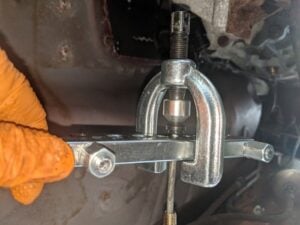Resetting Long-Term Fuel Trim (LTFT)
It is essential to reset the Long Term Fuel Trim (LTFT) after performing any maintenance work that may impact the engine fuel and ignition system. This includes but is not limited to replacing or adjusting the Oxygen Sensor, MAF Sensor, MAP Sensor, IAT Sensor, Coolant Temp Sensor, Throttle, TPS Sensor, IAC Valve, any Vacuum Line, Fuel Pump, Fuel Injectors, Fuel Pressure Regulator, Purge Valve, Canister Shutoff Valve, and Spark Plugs. Failure to reset the fuel trims could result in unstable or non-converging adaptive fuel maps.

The fuel map is a two-dimensional table that determines how much fuel to inject based on the engine’s RPM and load value. The base fuel map (BFM) is hard-coded into the ECM, and the LTFT adjusts it for engine wear, sensor drift, and fuel quality. If the BFM was perfectly calibrated, the LTFT would be zero across the table. However, as LTFT values are only adapted to specific RPM and load combinations, they may not adapt at the same rate. This can lead to diverging and discontinuous fuel maps that result in engine surges and hesitations.

Resetting the LTFT is necessary when fixing mechanical problems that have caused the fuel map to diverge. Failing to reset the LTFT can cause the adaptive algorithms to become unstable and diverge further, leading to even more significant problems. For example, if the LTFT values at 2000 RPM are +18% and at 2050 RPM is -18%, the engine may oscillate between these two values, causing surges and hesitations.
How to Reset Fuel Trim?

Resetting the LTFT can prevent such issues and is accomplished by disconnecting the battery for a few minutes or turning the ignition key to discharge the system.
- Start the car and let it run until it reaches its normal operating temperature.
- Turn off the ignition and locate the ECM (engine control module) main fuse in the fuse box.
- Carefully remove the ECM main fuse.
- Turn the ignition to the “on” position without starting the car. Wait for the system check to complete. During this time, several errors may be detected as a result of the missing ECM main fuse.
- Turn the ignition off once again.
- Reinsert the ECM main fuse into its original slot in the fuse box.
- Turn the ignition back to the “on” position and wait for the system check to complete again.
- Start the car and make sure everything is functioning properly.
It is essential to maintain a smooth and continuous fuel map to ensure the engine runs optimally. Small changes in operating conditions should only result in small or no changes in the fuel map value. Therefore, it is crucial to reset the LTFT after performing maintenance work that may impact the engine’s fuel and ignition systems. This will help ensure a smooth and stable adaptive fuel map, preventing engine surges and hesitations and saving car owners time and money.
Conclusion

We recently completed a fuel filter change on a vehicle and knew that it was essential to take another look at the scan tool data stream PIDs (parameter identifiers) for Short-Term Fuel Trim (STFT) and Long-Term Fuel Trim (LTFT) with a professional diagnostic scanner. After clearing any diagnostic trouble codes (DTCs) and resetting the fuel trim or adaptive fuel, we could obtain a quick and accurate reading.
It’s important to note that resetting the fuel trim is a critical step that should always be done after completing any fuel trim-related repairs, such as fixing a clogged fuel filter or a defective fuel pump. Failure to reset the fuel trim can result in poor idling or improper vehicle performance.

If the vehicle or scan tool does not support resetting fuel trim, otherwise known as Keep Alive Memory (KAM), there is an alternative solution. You can remove the key from the ignition, disconnect the battery terminals from the battery post, and connect a one-ohm/one-watt resistor to bring down the PCM’s capacitors/memory. This will effectively reset the fuel trim, ensuring that your vehicle is performing at its best.







